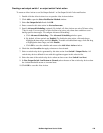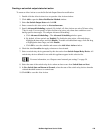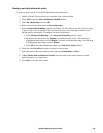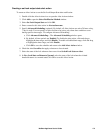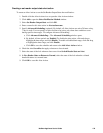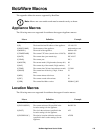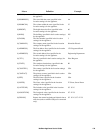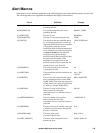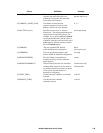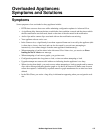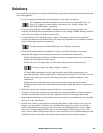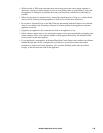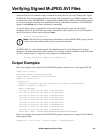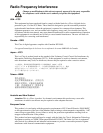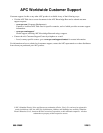
136NetBotz Appliance User’s Guide
${ALERT_LEVEL} The name of the specific alert
sequence that caused the alert to be
generated. Corresponds with the Label
value of the alert sequence.
First Alert Level,
Second Alert Level
${CURRENT_ALERT_NUM} The number of times the alert
sequence repeated, from 0 up to the
Repeats value for the alert sequence.
0, 1, 2
${ISACTIVE?yes?no} Specifies custom active vs. return to
normal text. The strings yes and no can be
replaced with user-specified strings. For
example, if you specify active and cleared
for the yes and no values and the macro is
translated, if the alert is still active the word
active appears. When it returns to normal,
the word cleared appears.
active and cleared
${USERURL} The user-specified URL defined
within the threshold configuration.
http://
www.mysite.com
${USERDESC} The user-specified description value
defined within the threshold configuration
Too high
${RESOLVEUSERID} The user ID that is responsible for
manually resolving an alert (when this
option applies).
joeuser
${RESOLVECOMMENT} The text entered into the User-resolution
comment field whenever an alert needs to
be manually returned to normal (an option
which can be selected whenever a
threshold is configured).
Turned on the A/C;
Fixed the leak
${START_TIME} The time the alert condition was initially
detected.
13:01:45
${RESOLVE_TIME} The time the alert condition
returned to normal.
13:01:45
Macro Definition Example




